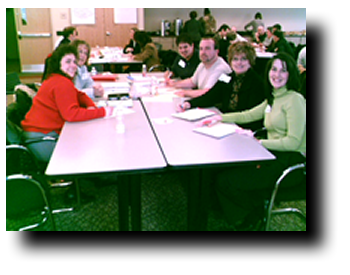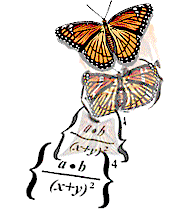Members
News
MSPnet
Math Science Partnership
Vision
The goal of the Math Science Partnership is improvement of student achievement in mathematics and science for all students through learning teachers, involved faculty from institutes of higher education, and sustained coordination through the intermediate units.
Description
Through grants from the National Science Foundation and the PA Department of Education, the Math & Science Collaborative developed and implemented the Math Science Partnership, which includes four Intermediate Units, 40 leadership districts, eight “high needs” districts, four Institutions of Higher Education, Carnegie Science Center, RAND Corporation, and multiple expert partners from across the nation.
The Partnership is based on the belief that the level of student achievement in mathematics and science can be strengthened by administrators and classroom teachers who are themselves willing to become learners and deepen their own conceptual understanding of the big ideas in mathematics and science.
Through a variety of professional development and support avenues, the Partnership established goals to:
- Increase students’ knowledge of math and science through an increase in the breadth and depth of their participation in challenging courses within coherent curricula.
- Increase the quality of the K-16 educator workforce through leadership guided, data- based decision-making and the effective implementation of challenging courses within coherent curricula.
- Create sustainable coordination of partnerships in Intermediate Units that build intentional feedback loops between K-12 and Institutions of Higher Education.
- Improve the mathematics and science learning experiences for all undergraduates, accompanied by relevant preparation for pre-service teachers.
Model of Participation
District leadership teams engage in a strategic planning process beginning with analysis of such data sources as successful course completion rates and multiple measures of student achievement, and culminating in a district-based action plan. After identifying strengths and weaknesses of their mathematics and science teaching and learning, teacher leaders are selected to attend research-based leadership academies, which are rooted in content, and focus on understanding the use of student thinking to support learning. These leaders return to their districts with the tools needed to facilitate on-site professional development with the intent to create an intellectual community that values learning teachers, and sustains ongoing collegial discussions to improve student learning in mathematics and science.
Opportunities Offered by the Math Science Partnership
Lenses on Learning
An intensive seminar series, Lenses on Learning builds administrator capacity to support improved mathematics teaching and learning through observation and supervision. This field-tested, research-based series, developed by the Education Development Center, focuses on K-8 mathematics, but past participants have found it applicable to other grade and content areas.
Leadership Action Academies
Appointed by the District’s Superintendent, the Leadership Action Team is led by a central office administrator who has been given the authority and responsibility for facilitating district participation in the Math Science Partnership. The eight member Leadership Action Team also includes a guidance councilor, a Mathematics teacher leader from the elementary, middle school and high school levels, and a Science teacher leader from the elementary, middle school and high school levels. While these teams should meet frequently within their districts, they are convened five times each year at the MSP Leadership Action Academies. This structure facilitates team responsibilities through meetings involving teams from multiple districts.
- Day One: Examining data in order to set goals Coming together in late September in the partner Intermediate Units, the Leadership Action Teams examine their student achievement data, comparing it to the ambitious benchmarks set by the MSP.
- Days Two & Three: Exploring available resources Through the conferences called Network Connections held in October and February at Carnegie Science Center, the teams learn about relevant research, sample professional development experiences, and become aware of tools, like the Curriculum Frameworks, that educators can use to build district capacity to address their goals.
- Day Four: Building and sharing action plans. Teams gather for a half day in April to share a draft of their action plan with other teams in the partner Intermediate Units. And in May they meet to share their final action plan for June 2004-May 2005—and consider strategies for working together across the Partnership.

Teacher Leadership Academies
Three distinct academies build teachers-leaders’ capacity to work within their districts to strengthen teaching practice in support of improved student learning. Academy content is discipline- and level-appropriate, drawn from proven, field-tested, research-based tools developed by nationally recognized organizations. Mathematics and science faculty from partner Institutions of Higher Education bring content depth to the sessions. Teacher Leadership Academies include Elementary Mathematics, Secondary Mathematics, and High School Science.
K-8 Science Instructional Reform
The majority of Partnership districts are involved with science reform at the elementary level through ASSET, DASH/FAST, Science Companion, Science Matters, or ScienceWISE. The Math Science Partnership will support the development of district plans for the sustained use of these materials, and will provide the districts with subsidies for materials support, declining over the five-year period, to provide a bridge to a sustainable solution to this crucial piece of elementary science reform.
Content Deepening Seminars
There are several quality opportunities within the region for professional development experiences that can increase content competency in mathematics and science of K-12 educators. The Math & Science Collaborative Journal, published semi-annually includes a directory of 40 pages of professional development opportunities, including seminars by colleges and universities, professional associations, and other non-profits. To encourage strategic attention to building content capacity in districts, each Leadership Action Team will have a budget to fund workshop vouchers and substitute/stipends to support two educators from each of the three levels in mathematics and in science to attend three-day Content Deepening Seminars. Using data gathered from the Teacher Content Inventory, each Leadership Team will select the opportunities featuring the content most needed and select the teachers to receive that training, and plan for the follow-up use of that increased knowledge, strategically building their district’s internal capacity.
Teacher Fellows
Teacher Fellows will be key players in helping to create sustainable partnerships capable of improving the teaching of mathematics and science in all levels of education. Twenty teacher fellows will be involved across the four MSP Higher Education Partners from 2004-2008, beginning with the summer of 2004. The Math Science Partnership has created these partnerships to provide the opportunity for both K-12 and Higher Education to bring their unique expertise to bear on the common goals of:
- Increasing and deepening math and science knowledge for all students, K-20, and
- Establishing the implementation of research-based, effective teaching strategies in math and science at all levels of instruction.
Educator Networks
Teachers who use Everyday Mathematics; Investigations in Number, Data, and Space; or Connected Mathematics in their classrooms meet in role-alike groups to discuss effective strategies for the effective implementation of these materials. Educator Network meetings give participants an opportunity to discuss obstacles they face and to hear possible solutions from other teachers in the region using these materials. They have time to explore a topic in depth and to play and discuss some of the games used to develop their students’ skills. They also have time to analyze student thinking. Working together, teachers discuss student thinking in order to find out the knowledge the student have, and what knowledge is still needed.
